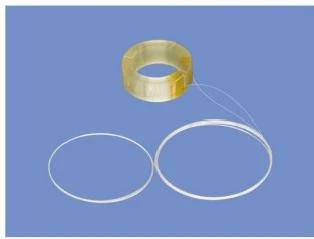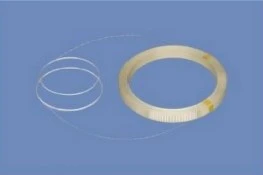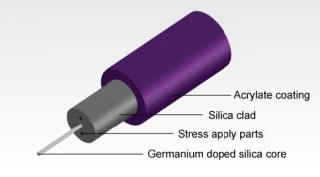Description
FOG PM Panda Fiber
CSRayzer Optical Technology Co., Ltd is a leading specialist in the field of special optic devices, offering cutting-edge solutions for polarization maintaining fibers. Our expertise is backed by complete equipment technology and process technology, including PCVD equipment, drilling equipment, wire drawing equipment, and testing equipment, all of which are developed with independent intellectual property rights. Our polarization-maintaining optical fibers are crafted using patented technology, ensuring a high standard of quality and innovation. The production process involves a unique set of proprietary techniques for drilling the polarization-maintaining core rod, boron stress rod, and mother rod in a single operation.
Our FOG PM Panda Fiber is specifically designed for fiber optic gyroscopes (FOGs), featuring a distinctive panda structure. This design incorporates a perfectly symmetrical "panda eye" stress unit, where the core and the center of the panda eye align in a straight line at three points. This meticulous design ensures high reliability and significantly reduces polarization crosstalk, making it an ideal choice for applications requiring precision and stability.
CSRayzer's commitment to quality and innovation is evident in our FOG PM Panda Fiber, which is engineered to perform optimally in demanding environments. With a focus on delivering superior performance and reliability, our fibers are an excellent choice for those seeking advanced solutions in polarization-sensitive components and fiber optic gyroscopes.
FOG Polarization Maintaining Panda Fiber
Specifications
| Mode Field Diameter: | 6 um |
|---|---|
| Wavelength Range: | 1100 – 1290 nm |
| Fiber Type: | Panda |
| Wavelength Range For All Models: | 1100-1290nm, 1290-1520nm |
| Central Wavelength: | 1310nm (1550nm) |
| Attenuation: | ≤0.6dB/km |
| Beat Length: | ≤3mm (≤3.5mm) |
| Cladding Outside Diamater: | 80.0±1.0um |
| Coating Outside Diamater: | 135.0±3.0um (165.0±3.0um) |
Features
- Complete equipment technology and process technology for polarization maintaining fiber
- Independent intellectual property rights for PCVD equipment, drilling equipment, wire drawing equipment, and testing equipment
- Invention patented technology for polarization-maintaining optical fiber
- Complete set of proprietary technology for drilling the polarization-maintaining core rod, boron stress rod, and mother rod at one time
- Panda structure with a symmetrical "panda eye" stress unit for high polarization crosstalk
- High reliability for FOGs and polarization-sensitive components
- Wide working temperature range (-50°C to 85°C)
- Proof test of 100 kpsi
Applications
- Fiber optic gyroscopes
- Polarization-sensitive components
- Laser optics
- Metrology
- Vision and imaging
Frequently Asked Questions
What is polarization-maintaining (PM) fiber?
What are the key optical specifications of this PM fiber product?
What are the key geometric specifications of this PM fiber product?
What is the working temperature range for this line of PM fiber products?
What is the proof test for this line of PM fiber products?
What is the polarization maintaining fiber used for?
What is the unique feature of the panda structure in the fiber?
What is the working temperature range of the fiber?
What are the key optical specifications of the fiber?
What are the key geometric specifications of the fiber?
Similar Products
Your inquiry has been received.
Create an account by adding a password
Why create an account?
- Auto-complete inquiry forms
- View and manage all your past messages
- Save products to your favorites
- Close your account anytime — no hassle



